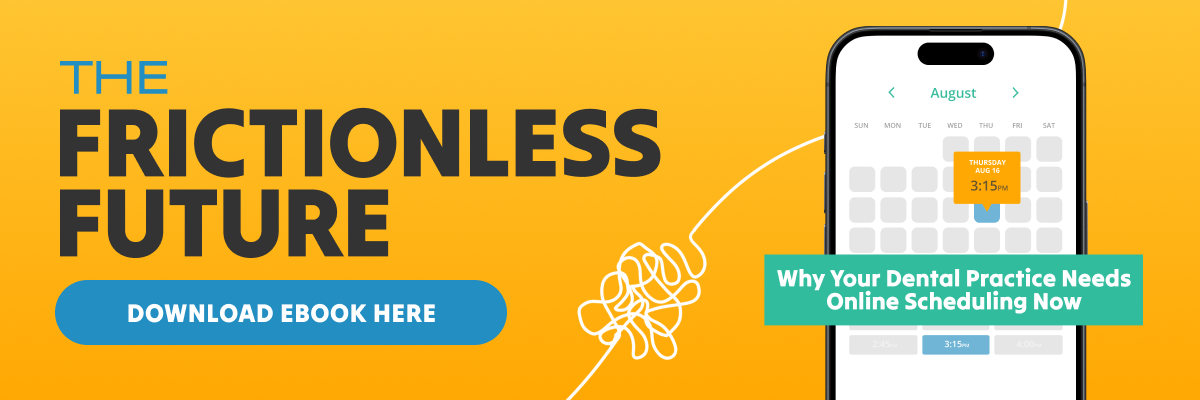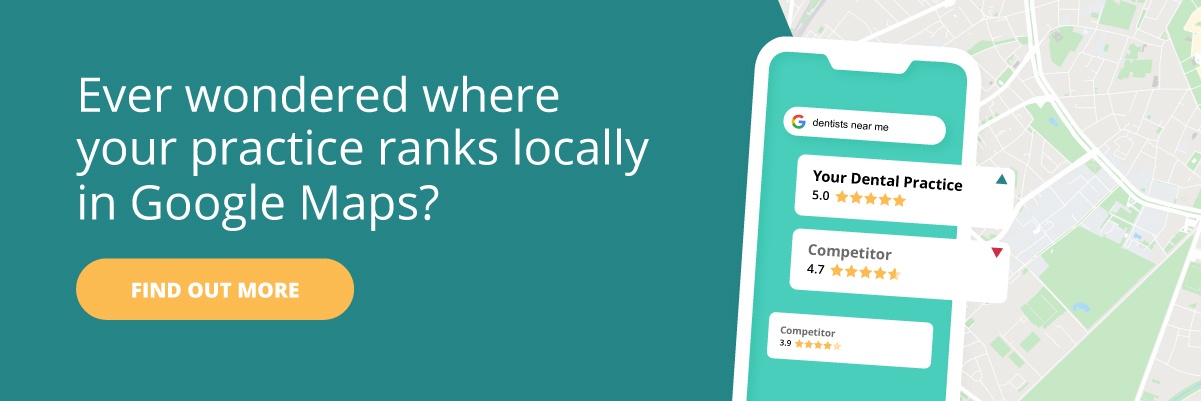
Dental SEO: Speak Your Patient’s Language, Show Up Where It Counts
If you’re a dentist dipping your toes into the world of digital marketing, you’ve probably heard of dental SEO. But what does it actually mean, and why does it matter? At its core, dental SEO is about helping potential patients find your practice when they search online.
But here’s the twist: you won’t have much success if your strategy involves throwing dental jargon onto your website and calling it a day. A successful SEO strategy requires an understanding of the real words and phrases people type into Google, and how to use that knowledge to direct your dental marketing efforts.
In this guide, we’ll break down how search terms work, why they’re different from traditional keywords, and how you can use them to bring more qualified traffic—and more smiling patients—through your doors.
Table of Contents
- What Are Search Terms (and How Are They Different from Keywords)?
- Why Search Intent Is Everything in Dental SEO
- How to Discover the Right Search Terms for Your Practice
- Long-Tail Keywords: Your New Best Friend in Dental SEO
- How Search Terms Fit Into Your Dental Website
- SEO Is Not a One-Time Fix
- Let the Dental SEO Pros Handle the Heavy Lifting
- FAQ
What Are Search Terms (and How Are They Different from Keywords)?
Let’s clear up a common confusion in dental SEO: the difference between search terms and keywords.
Search terms are the exact words a patient types into Google when they’re looking for answers. Think of someone searching, “dentist open on Saturday near me” or “how to stop tooth pain fast.” These phrases reflect what real people are thinking and how they speak, not how dental professionals talk.
Keywords, on the other hand, are the strategic terms we (marketers and SEO experts ✋) use to optimize your website. These might include phrases like “emergency dental services” or “family dentistry.” They’re often cleaner, broader, and more generalized.
Search terms and keywords are not always the same, and that gap matters.
Imagine a dental website optimized for the keyword “periodontal disease treatment.” That’s medically accurate, but the patient searching “why do my gums bleed when I brush?” won’t find you unless your site speaks their language.
The takeaway? If you want to rank higher and attract the right kind of patients, your content has to reflect how they search, not just how you describe your services.
Why Search Intent Is Everything in Dental SEO
Searches like “why do my teeth hurt when I drink cold water” or “how to get rid of bad breath” show someone looking for answers, not a dentist—yet.
Best content: Blog posts, FAQ pages, educational resources.
Informational Intent
Make sure your service pages and blog posts actually answer the questions patients are asking. Keep it clear, friendly, and conversational—no dental textbook jargon required.
Commercial Intent
These searchers are starting to look for a solution, like “best dentist for crowns near me” or “dental implants vs. bridges.”
Best content: Comparison guides, service pages with clear benefits, testimonials.
Transactional Intent
These are your golden patients! They’re ready to take action. They’ll type things like “schedule teeth cleaning Salt Lake City” or “walk-in dentist open today.”
Best content: Service pages with online scheduling, strong CTAs, local SEO optimization.
Navigational Intent
Sometimes, people are just trying to find you. They’ll search “My Social Practice dental SEO” or “Dr. Kim Family Dentistry website.”
Best content: Branded SEO, clear navigation, contact info front and center.
Why does this matter? Because if you’re targeting a high-intent keyword like “dental emergency appointment” but your corresponding website page only discusses the signs of a dental emergency without offering a way to book, Google (and your potential patients) won’t see you as the right fit.
Dental SEO creates the right content for the right moment.
How to Discover the Right Search Terms for Your Practice
You don’t need a crystal ball to figure out what your future patients are searching for, but you do need data and a little strategy.
Here’s how to uncover the search terms your ideal patients are using so you can start speaking their language:
Use Google Search Console
This free tool from Google shows you the exact queries people use to find your website. You might discover terms like:
- “pediatric dentist Salt Lake City”
- “how much does a dental crown cost”
- “dentist that takes Aetna near me”
These aren’t guesses, they’re real searches. And they’re golden opportunities to shape your content around what’s already working.
Try Google Autocomplete & “People Also Ask”
Start typing a phrase like “tooth pain when…” into Google and see what it suggests. You’ll find results like:
- “...tooth pain when biting down”
- “...tooth pain when drinking cold water”
These suggestions reflect common concerns. Use them in blog titles, FAQs, or as headline inspiration for service pages.
Listen to Your Patients
Every day, your patients ask you questions. “Will whitening damage my enamel?” or “What’s the difference between a crown and a cap?” Write them down. This real-world language is exactly what people are searching for.
Use Social Media
Your practice’s own Facebook and Instagram comments are treasure troves of patient-friendly language. Are people talking about “gum recession” or are they using the phrase “shrinking gums”? Match their vocabulary.
Or Let the Pros Handle It
You’re already busy running a practice. That’s why working with a dental marketing company like My Social Practice can be the difference between effective dental SEO and marketing that flounders. Our experts use premium SEO tools, Google data, and years of dental search behavior experience to uncover the best-performing terms for your services, specialties, and location.
Long-Tail Keywords: Your New Best Friend in Dental SEO
In the world of dental SEO, going broad doesn’t always get you results, especially when every other dental practice is optimizing for the same terms. That’s where long-tail keywords come in. They’re specific, lower-competition search phrases that are laser-focused on what your future patient really needs.
Think of the difference between:
- Short-tail: “dentist”
- Long-tail: “emergency dentist open on Sunday in Mesa AZ”
The first will pit you against national chains and directory giants. The second? That’s your sweet spot—clear intent, low competition, high conversion potential.
Why Long-Tail Keywords Matter
- They reflect high intent: People searching “best Invisalign provider in Salt Lake for teens” aren’t just browsing, they’re ready to book.
- They match specific services: Target phrases like “painless root canal dentist in Ogden” or “same-day crowns for cracked molars” to attract patients looking for exactly what you offer.
- They help with voice search: More and more people are using voice assistants to ask questions like, “Where can I get a tooth pulled today near me?” Long-tail keywords align perfectly with how people speak.
Even if a long-tail term only gets 20 searches a month, that’s 20 highly qualified visitors who are actively looking for your exact service in your exact area. Relevance trumps volume.
How Search Terms Fit Into Your Dental Website
Now that you know how to find the right search terms, let’s talk about where to put them. Effective dental SEO isn’t just about collecting keywords and hoarding them like a fire-breathing dragon sitting on a pile of gold. That’s how you get poor results (or mountain-stealing hobbits).
Keywords need to be naturally woven into your website so that Google understands your content and patients find exactly what they need.
Here’s where your search terms should live:
Page Titles
This is the first thing both search engines and users see. Make it clear, specific, and patient-focused.
- ❌ General: “Our Services”
- ✅ Optimized: “Family Dentist in Plano – Cleanings, Fillings & More”
Meta Descriptions
While they don’t directly affect rankings, these blurbs can make or break your click-through rate.
- Use your main search term.
- Keep it under 160 characters.
- Make it compelling: “Looking for a gentle dentist in Tempe? Book your visit today with Dr. Jacobs Family Dentistry.”
Headers (H1s, H2s, etc.)
These act like signposts for both your readers and Google. Use them to organize your page and reinforce your search terms.
- Example: H2 – “What to Expect During a Dental Implant Consultation in Boise”
On-Page Copy
This is the meat of your website or dental blog. Don’t overdo it. Instead, focus on clarity and natural language.
- Speak like your patients do.
- Use variations of your main term: “tooth pain relief,” “relieving dental discomfort,” etc.
FAQs and Blog Posts
Answer common questions your patients actually search. It’s a great way to hit long-tail keywords and position yourself as a trustworthy expert.
Avoid Keyword Stuffing
Shoving “dentist Salt Lake City” into every sentence doesn’t help you. It actually hurts your rankings. Google is smarter than that, and so are your patients. Keep your language natural and patient-first.
Pro Tip: Read your content out loud. If it sounds robotic, rewrite it. Let your website speak like a helpful, friendly dentist, not a keyword robot. When your content aligns with what patients are actually searching for, both Google and your future patients will reward you.
SEO Is Not a One-Time Fix
Here’s where many dental practices go wrong: they think of dental SEO like a filling—one and done. But search engine optimization is more like oral hygiene. It needs ongoing attention, regular check-ups, and the occasional deep cleaning. (Wasn’t that a beautiful metaphor?)
The bottom line is that the way people search changes constantly, especially as new technology interrupts traditional search.
Search Behavior Evolves
Today’s patients might search “dental implants recovery time.” Next month, they’re asking, “how long do same-day implants last?” Language, trends, and even seasonal needs (hello, “teeth whitening before wedding”) are always shifting.
AI and Algorithm Updates
Search engines—especially with the rise of AI-powered search—are getting better at understanding intent, voice queries, and nuanced questions. That means your content has to stay updated and relevant to maintain visibility.
Rankings Can Drop Overnight
You might rank #1 for “pediatric dentist in Sandy” today, but if competitors start posting stronger content or Google shifts how it interprets search intent, you could drop fast. And with that drop comes fewer calls, fewer appointments, and fewer patients.
Let the Dental SEO Pros Handle the Heavy Lifting
At My Social Practice, we specialize in addressing the unique challenges of marketing dental practices online. We don’t just dabble in SEO, we live and breathe it, tailoring every strategy to your specialty, your location, and your goals.
Here’s what we do so you don’t have to:
- Find the right search terms your future patients are actually typing—no guesswork.
- Create SEO-optimized content that sounds like your practice, not a robot.
- Track rankings, traffic, and conversions so you know what’s working.
- Stay ahead of AI-driven search trends and Google algorithm updates.
- Make ongoing improvements that keep you climbing the rankings, month after month.
Think of us as your dental SEO hygienist—constantly polishing your online presence while you focus on patients.
With My Social Practice, you don’t just show up in search results. You show up for the right searches, with the right message, at the right time. We help you be found and chosen.
Frequently Asked Questions
What search terms should I target for my dental website?
You should focus on search terms that match the way real patients talk, not clinical or technical jargon. For example, instead of targeting “periodontal therapy,” use phrases like “bleeding gums treatment” or “how to fix gum recession.” Tools like Google Search Console, AnswerThePublic, and even listening to your patients’ questions can help you identify the language your audience is actually using. These real-world search terms make it easier for patients to find you online and then convert to scheduling an appointment.
How often should I update my dental SEO strategy?
You should review and adjust your dental SEO strategy at least quarterly, but the more, the better. Search trends, keyword performance, and Google’s algorithms evolve constantly, especially now with AI-driven search experiences changing the landscape. Regular updates ensure you stay visible in local search results and continue attracting the right patients. Working with a dental marketing agency ensures your strategy stays fresh without you needing to monitor every shift yourself.
Can I do SEO for my dental practice myself, or should I hire a professional?
While you can handle basic SEO tasks like writing blog posts or updating meta titles, effective dental SEO requires ongoing keyword research, technical optimization, trend monitoring, and content strategy—often more than most practices have time or expertise for. Hiring a professional dental marketing agency, like My Social Practice, ensures your website is always aligned with current best practices and maximized for visibility, engagement, and patient conversion.
About the Author: Megan Nielsen is an SEO strategist and the Grand Overlord of copywriting at My Social Practice. My Social Practice is a dental marketing company that offers a full suite of dental marketing services to thousands of dental practices throughout the United States and Canada.
![[Byte Sized Podcast Ep. 23] Frictionless Online Dental Scheduling: Why Your Practice Needs It Now Feat. Colin Ambler - dental SEO - My Social Practice - Social Media Marketing for Dental & Dental Specialty Practices online dental scheduling](https://mysocialpractice.com/wp-content/uploads/2025/12/byte-sized_ep23.png)






![[Byte Sized Podcast Ep. 23] Frictionless Online Dental Scheduling: Why Your Practice Needs It Now Feat. Colin Ambler - dental SEO - My Social Practice - Social Media Marketing for Dental & Dental Specialty Practices online dental scheduling](https://mysocialpractice.com/wp-content/uploads/2025/12/byte-sized_ep23-100x100.png)



